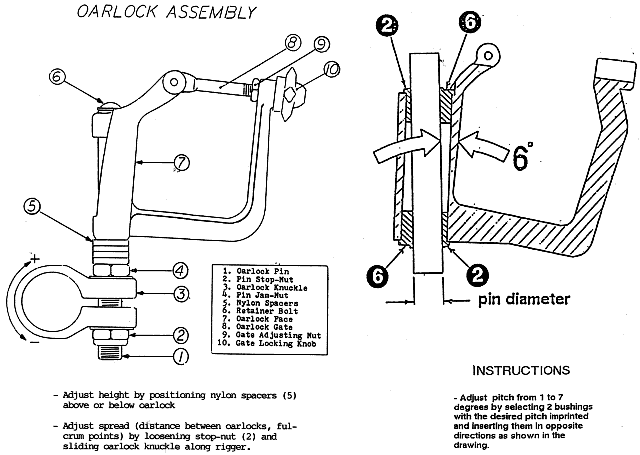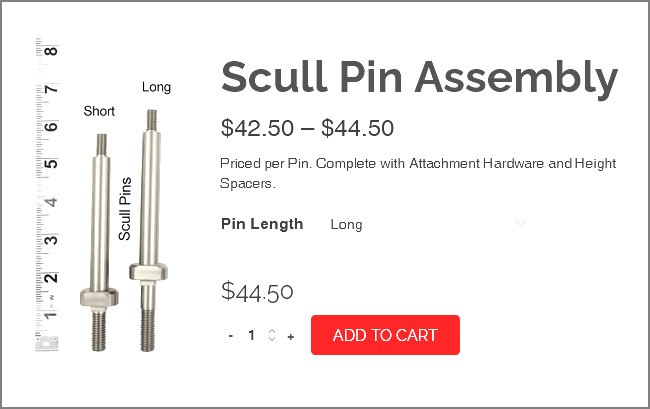I started cleaning up the oars I bought back in the long ago. They’re made for rafting or for utility work on bass boats etc. They are not only inelegant, they are anti-elegant. For the record, they are 9′ 0″ long and end in narrow, heavy blades with no spoon. The blades are too thick, too narrow, too straight, too short, and too flat. About an each of each blade has turned black and delaminated from ground rot. Other than that, they’re fine. I cleaned one oar up and squared up the blade tip. I left the other oar untouched for the “before” show and tell, and will bring it up to speed soon. I need to decide between extending and elaborating the blade surfaces or just replacing everything at the business ends wholesale. It shouldn’t be hard if I don’t overthink it. What are the odds of that?
The oar shaft is 5.63 inches in circumference which implies a diameter of 1.79 inches or 45mm. Is that plausible for my purposes? The diameter of sculling oars seems to be classified information (probably because everybody who cares about that already knows). While shopping for sleeves, I gathered that the standard diameters are 43-45.5mm (Braca from eurow.eu) or 2 inches (Dreher and pretty much everyone else?) so mine are in the waterpark. If the shafts need to be shimmed to 2 inches for the sleeves to fit properly [they do not
In for a penny, in for $36 and change. Turns out that larger asymmetrical kayak blades are not that much smaller than some Concept2 sculling blades, and they are so much cheaper. For $36.50, I’ve got a white Wonitago kayak paddle on the way from Amazon that I intend to cannibalize for its two blades and some of its shaft. The left and right ends of the 30mm aluminum alloy shaft will serve to connect the blades to the rebuilt oars and extend them to the preferred 9′ 6″ overall length. I can cut all shafts for length and drill out the old shafts to accept the new ones to serve as blade-adapters (use a Forstner bit, maybe with an extender, some casual guide rails, and voila). Epoxy ought to bond everything well. Sometimes it sounds simple. Sometimes it really is simple. I am waiting to have all the pieces in my hands so that I can measure everything together before undertaking any part of this madness.
While I am waiting, here are some crude surface area comparisons based on just the length and the widest point of various blades:
Wonitago
Asymmetric: 42 x 18 cm (756 cm^2)
Concept2
Bantam: 36 x 22 (792)
Comp: 37.5 x 23 (864)
Macon: 50 x 18 (900)
Big: 44 x 22 (968)
Smoothie2: 46 x 22 (1012)
Fat2: 46 x 23 (1058)
Shape, material, and curvature matter also, and maybe more, but none of that fits in a simple table. Surface area ought to map at least roughly to grip in the drive. In that aspect, the Wonitagos only give up 5% to Bantams which are the only Concept 2 sculls I could sanely consider. Cobbling sculls together saves a lot of money right now and gives me lots of room to move up when I eventually have a worthwhile idea about what I want to move up to.
Day 48
Scull pins are the upright axles around which the oarlocks swing during the stroke. They attach the oarlocks to the rigger. They’re also the fulcrum upon which the oars rest:; the oars push against them to propel the boat forward. All that makes scull pins sound pretty damn sophisticated and critical. But they’re bolts, just fixed bolts with a fancy name. The oarlocks I have on the way use 13mm pins [note that that dimension is set by the oarlock bushing and I bet the same oarlocks will accommodate difference size bushings — you learn something every day]. “13mm” refers to the size of the scull pin o’er which they should be installed. One half inch is 12.7mm, so a shaft of that diameter filling a 13mm passage would leave a gap of just 0.15mm all around. That’s 6 thousandths of an inch which is a pretty fair fit. A 12.7mm brass tube costs $8 for 12 inches and is enough for two scull pins. Cut to length, run a 3/8- or 1/4-inch threaded rod through the middle, fill the gap inside with thickened epoxy, throw on a nut and a washer or two, and you’re done, right? The result should be a decent pair of scull pins for a lot less than shown below.

What about scull pins makes a pair of them worth $89 plus tax and shipping, call it $100? What am I missing? That is to some degree a rhetorical question but only to some degree. You might ask why I spend what I spend on telescopes, mounts, software, and optics when you can clearly get something that “works” for far less. There’s function and there’s finesse. Also, the scare quotes around “works” suggests that there is a continuum between “miserable failure” and “great success” with “reasonable serviceability” somewhere in the middle. Judgments and expectations differ. Finesse costs more than serviceability. There’s no reason to pay for it unless you have a use for the marginal difference in quality and know how to use it. In this sport, for me, for now, function is everything and finesse is lost.
The stern float bag is perfect. The bow bag will do, but there’s a lot of room left up there. Sometimes this seems like a very big boat. Push the bag to the prow and call it luggage space? At a crude guess, calculating their volume as simple cones, each of these floats holds on the order of 20 liters. Forty liters of air in water implies about 88 pounds of buoyancy which is considerably more than the boat will weigh. They’ll keep it off the bottom.
The Black Diamond pigments are here. I’ll need to epoxy the deck before choosing an accent color. Maybe tonight.
A lot is about to happen. I’m pretty sure that most of it will succeed. It’s going to be a busy few weeks. I’m waiting for a lot of small parts to gather ’round before diving in.